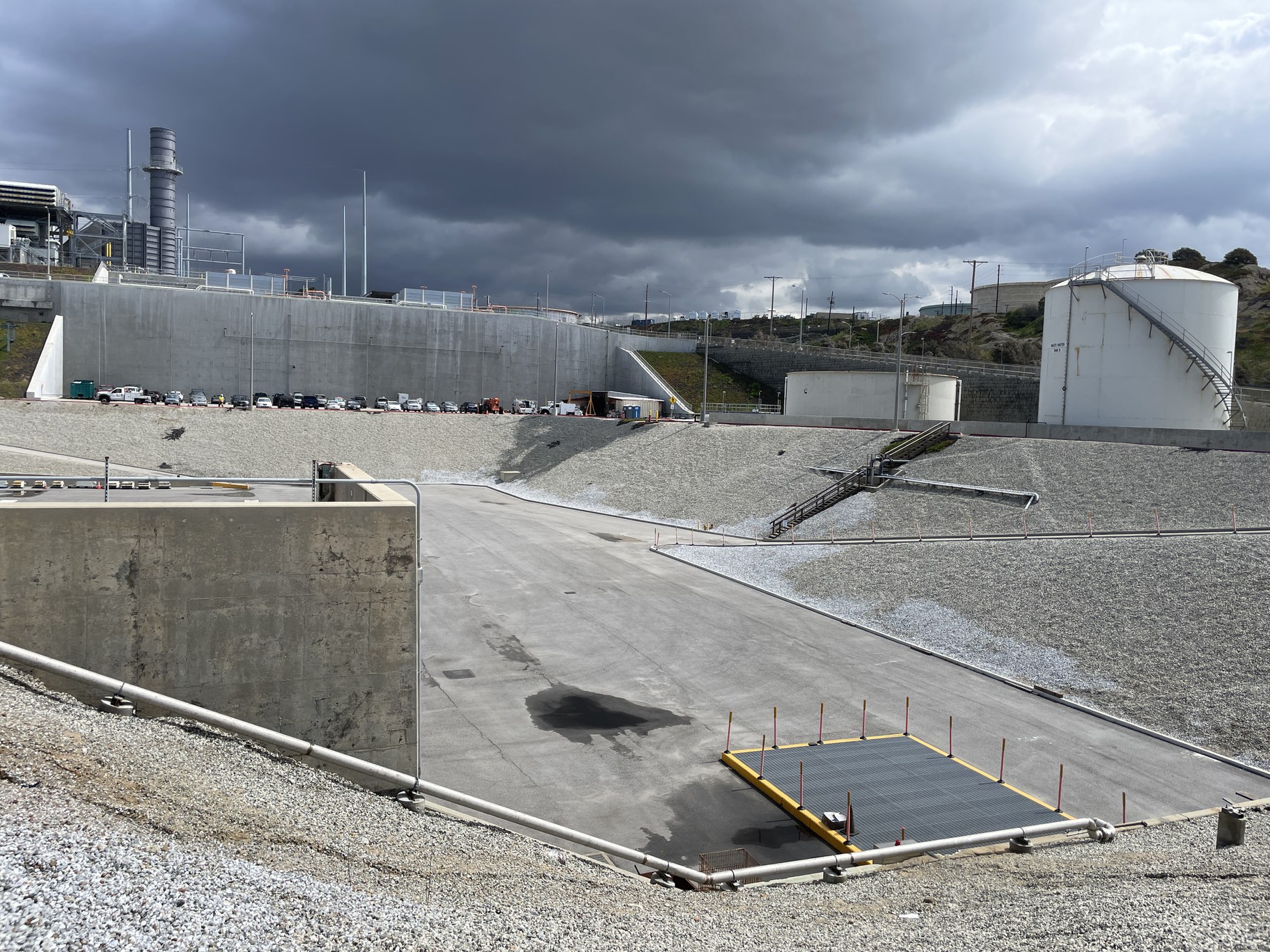LA is betting its clean energy future on a giant hole in the ground.
That hole next to Dockweiler Beach is large enough to fit a Macy’s department store. It’s at LADWP’s Scattergood Generating Station, and it used to be filled with one of several gas plant units until it was demolished in 2017. It’s been empty ever since.
“At the time, we said, ‘Well, why are we going to rebuild a unit that would be totally dependent on natural gas, when we are planning to be 100% clean energy in the future?’” says Jason Rondou, LADWP’s director of power system planning.
In February, LA City Council unanimously decided to spend $800 million to turn Scattergood from a methane gas plant into a hydrogen plant. The city is trying to meet an ambitious goal to run on 100% renewable energy by 2035. The first phase of that plan will be built in this hole.

An old gas-powered unit at Scattergood from the 1970s that used to sit here will be replaced with a hydrogen one. Photo by Caleigh Wells
It’s the latest example of Scattergood’s history of adaptation. The oldest units in the middle of the plant were built in the 1950s and take 12 hours to fully turn on. The units behind it from 2015 are cleaner, and they turn on in 10 minutes.
Decades ago, this plant used to run all the time. But with so much energy coming from solar and wind now, the plant is mainly used for backup in major heatwaves.
“Over the course of the year, we use it about 20 or 30% of the time,” says Rondou. “In the future, we estimate that we'll probably use it between 1 and 5% of the time, meaning it's rarely used. But when it's used, it's needed.” In an emergency like a wildfire or an earthquake, LA needs a power source that can turn on with the flip of a switch. Today, natural gas does that. But now, the plant is adapting again.
“Based on what we know, today, the way to provide that renewable emergency backup power is with green hydrogen,” says Rondou.
The plan is pretty simple: Instead of heating up methane gas to create electricity as it has done for the past 70 years, the plant will heat up hydrogen.
Once the hydrogen unit is installed, the plan is to decommission the original gas units next to it installed in the 1950s.
“Combustion is just like any combustion as far as hydrogen goes, but we’ve got to remember that hydrogen doesn't have any carbon in it. So that's the beauty of it,” says LADWP Director of Power System Engineering Louis Ting.
The hydrogen the plant generates will be “green,” meaning it’s created by clean sources like wind and solar energy.
But carbon-free doesn’t mean it’s completely safe for people living nearby, say environmental activists.
“What we're concerned about is the combustion of hydrogen,” says Alex Jasset from Physicians for Social Responsibility - Los Angeles. “Because that's where the [nitrogen oxides] emissions come from. It's where a lot of the explosion risks come from.” Nitrogen oxides, or NOx emissions, are some of the notorious ingredients in smog. And since hydrogen combusts at higher temperatures than methane, that chemical reaction is more likely to happen with a hydrogen plant, leading to an increased likelihood of air pollution from the plant.
But Rondou says LADWP shouldn’t be the focus of Angelenos’ smog concerns. Its plants make up about 1% of NOx emissions. By 2035, he estimates it’ll be 0.1%. “That's very different from the airport across the street,” he says, referring to nearby LAX International Airport. “The jets coming in and out have uncontrolled NOx.”
Another concern environmentalists have raised is leaky pipes. That’s a risk that comes with anything combustible traveling through a pipeline, and the risk is higher with smaller molecules like hydrogen, which can fit through smaller leaks. Plus, hydrogen explosions can make bigger booms.
“It's very hard to detect once it does leak. And so we're concerned about the possibility of these leaks forming due to embrittlement,” says Legal Fellow Theo Caretto with Communities for a Better Environment.
In response, LADWP’s Ting says hydrogen as a fuel technology is decades-old. The space shuttles have run on hydrogen. The hydrogen-fueled Toyota Mirai first launched almost nine years ago. Scientists have gotten good at minimizing that risk.
“I don't think Toyota would be producing hydrogen vehicles if that is an issue,” Ting says. “And they're the ones that actually have customers go into hydrogen fueling stations [and] plug the hydrogen pipeline into a vehicle.”
The city is hoping to complete phase one of the project by 2029. The plant will continue burning gas for several years after that, but the end goal is eventually to burn hydrogen entirely and use 100% renewable energy by 2035.
